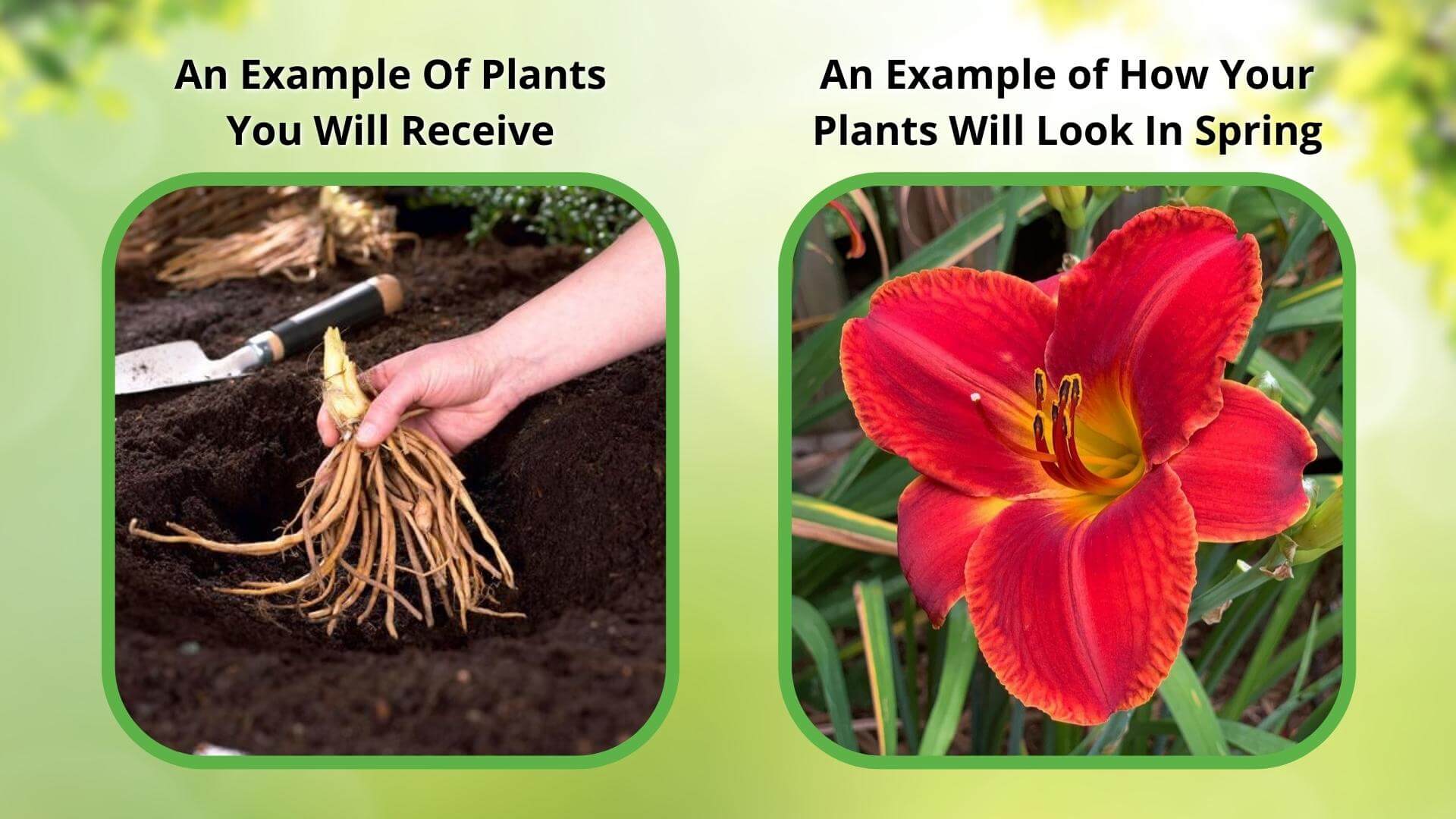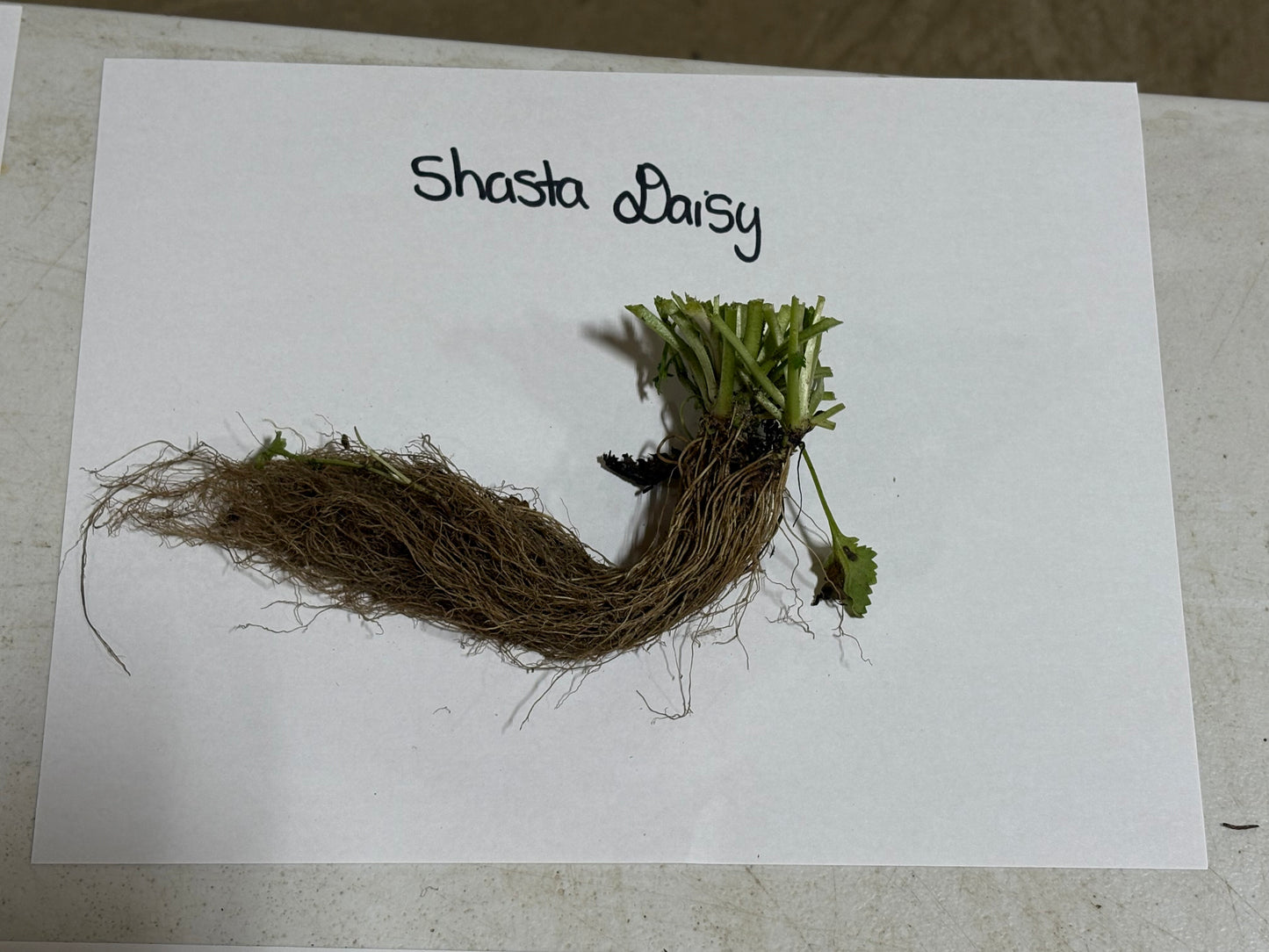Couldn't load pickup availability
🌸When you add 1 plant to cart, it automatically adds the free one
Shasta Daisy - The "He loves me, he loves me not" Perennial
The Shasta daisy is a delicate, hardy, and resilient perennial plant named for Mt. Shasta in California, where the plant was cultivated. Its snow-white petals match Mt. Shasta’s snowy peaks. In the 18th and 19th centuries, young girls used to call it the "he loves me, he loves me not" flower. Girls would pick the white petals surrounding the yellow center off, and one would be "he loves me" and the other "he loves me not." By the time the last petal was chosen, fate would tell them if the boy of their dreams loved them.
Aside from folklore, Tammy at TN Nursery enjoys writing about plants with this much character. This is one of her favorite perennials due to the vibrant yellow center and the vibrant white outline of the petals. She states, "The Shasta Daisy is a super hardy perennial, and we grow thousands to meet the demands we sell so many." They are super easy to grow and a favorite of our customers. It's low maintenance, disease- and pest-resistant, and it never has to be sprayed with herbicides or fungicides, making it a super environmentally friendly perennial of choice.
This flower is commonly found across the United States, despite being native to Europe and temperate regions in Asia. The silky petals and soft yellow center are immediately recognizable, and gorgeous at every turn.
Shasta Daisy Plant Details (Leucanthemum Superbum)
Family: Asteraceae
Light Requirement: Full sun, Partial shade
Water Needs: Low
Height: 1-4 ft
Spread: 1-2 ft
Growth Rate: Moderate - Fast
Soil Preference: Moist, Well-drained, Clay, Loam, Sand
Bloom Time: Summer - Early fall
Flower Color: White
Wildlife Value: Butterflies
Why Choose the Shasta Daisy for Your Garden
The Shasta Daisy is a 21-petaled flower whose thin, white petals have two overlapped rows. The petals are clustered tightly around a fluffy yellow center containing pollen. The narrow, oblong leaves are deep green with toothy edges along the sides.
The wide, eye-catching blooms are common in cut flower gardens and spread just as easily as native daisies despite their non-native status. These flowers can be distinguished from native daisy varieties by their shorter petals and flat, yellow center, ringed with light green.
How to Grow and Care for Shasta Daisy Plants
These sunny, cheerful blossoms are an undemanding plant which can thrive in many climatic areas. The flowers bloom from summer to early fall, and charm any corner of your gardenscape with their lush foliage for the rest of the year.
The Shasta Daisy prefers moist, well-drained soil but is happy in clay, loam, or sandy soil. Its blooms are attractive to butterflies, which help with pollination, and the seeds are dispersed through animals, running water, wind, and even mud carried around on shoes.
This Is How Your Plants Will Look upon Delivery

Bloom Season
Summer
Bloom/Foliage Color
White
Height at Maturity
Over 12"
Care
Shasta Daisies thrive in well-drained soil and require regular watering. Deadhead spent blooms to encourage continuous flowering. Fertilize early spring and cut back in fall to maintain plant health and vigor.
Plant Reproduction
Shasta Daisies spread underground through rhizomes, which can quickly increase the size of the clump
How to Grow and Care for Bare Root Perennials, Tubers, and Bulbs
Bare root perennials, tubers, and bulbs are an easy and economical way to jumpstart your garden with lasting beauty. These dormant plants should be planted in early spring or fall while the soil is cool and workable. Before planting, soak bare roots in water for 1–2 hours to rehydrate them. Choose a location based on the plant’s light needs—most flowering types prefer full sun, while others thrive in partial shade.
For bare root perennials, dig a shallow hole and spread the roots out naturally, ensuring the crown is level with the soil surface. For tubers and bulbs, plant with the pointed side facing up at a depth about two to three times their height. Cover with soil, gently press down, and water thoroughly.
Keep soil consistently moist (not soggy) until new growth appears. Add mulch to retain moisture and suppress weeds, but avoid covering the crown or bulb tops. Once established, these plants require little maintenance—just seasonal watering, occasional dividing, and deadheading or pruning as needed. With proper care, they’ll return and thrive year after year.
Shipping date depends on the date displayed and chosen when you order from the product's page.
We only accept returns on plants verified dead. If you think your plants have died, we offer a 1 year warranty, please use use this File a Claim Link to verify dead plants and start with return warranty process.




Caring Tips
How do I care for my Shasta Daisy?
Each box contains detailed care instructions and information about your product. But here's the basics.
Care Tips
Shasta Daisies thrive in well-drained soil and require regular watering. Deadhead spent blooms to encourage continuous flowering. Fertilize early spring and cut back in fall to maintain plant health and vigor.
Light Requirements
Shasta Daisy thrives in full sun to partial shade. For optimal blooming, it needs at least 6 hours of plain daylight daily, though it can tolerate some afternoon shade. Adequate sunlight promotes vigorous growth and abundant flowering.
Hardy Planting Zones
4 • 5 • 6 • 7 • 8 • 9
Received my order quickly and already planted them up. They looked healthy, being wrapped nicely in paper, and I'm looking forward to these being as healthy - Good as my previous order. Those are thriving after a month in the ground. I look forward to good blossoms next year.
So excited can't wait til next spring. Thankyou
We saw the TNT Nursery ad in the Garden Gate magazine and was impressed of how beautiful the flowers were; and decided to place an order. Once we contacted TN Nursery, customer service was absolutely wonderful with placing our order, can't wait to receive our plants.
Mrs. Juanita Jenkins
Virginia





